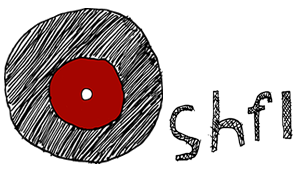“Ambient” is possibly the most broad description you can apply to music. It’s widely understood to be music that can (or sometimes should) be listened to passively, but this isn’t always true. Brian Eno’s famous quote that ambient music should be “ignorable as it is interesting” needs no introduction; this fundamental axiom from the mind that coined the term enshrined the idea that it ought to work at any level of attention. Other common signifiers of ambient music—like a lack of structure or rhythm—don’t necessarily apply either. Everything from amorphous drone to funky world fusion has been branded with the term, and it’s rare that the technicalities are as hotly disputed as other genres. (It’s likely you’ve encountered some scuffles about what it means to be “emo” or “punk,” for example.) Ambient, more than any other genre descriptor, is a philosophy. Most people agree on the aforementioned sonic qualities of ambient—but it’s an all-encompassing word that has room for ideas too. If you have an opinion about where, when, and at what volume your music should be played, you can make a case that your music is ambient.
With kankyō ongaku, this philosophical bent becomes abundantly clear. The Japanese term, translated literally as “environmental music,” was coined primarily to describe the kind of music Brian Eno was making starting with Ambient 1: Music for Airports. As Eno’s landmark record arrived on Japanese shores in the late 70s, several things were happening. The island nation was experiencing an unprecedented economic boom, generating plenty of money to go around for the funding of art and culture. These monetary blessings were spreading in the wake of what many were calling a “quiet boom,” where interest in the works of 19th century French composer Erik Satie was reaching a fever pitch with working musicians and students. (His “furniture music,” which was arguably the first conceptualization of music you weren’t supposed to pay attention to, was of particular note.) As economic interest converged on the arts in service of making Japanese public life more beautiful, many of the benefactors were students of Satie and Eno.
Music would be commissioned to play for department stores and communal areas, advertisements, film, ballet, prefabricated homes, and anything else you can imagine. The albums on this list cover a wide spectrum; few of them sound similar, and they differ significantly in the purpose of their creation and the attentiveness they demand of the listener. What they all have in common, however, is most important: a shared ethos of combining sound with an experience.










![ダンジンダン・ポジドン [Danzindan-Pojidon] cover](https://images.theshfl.com/ダンジンダン-ポジドン--Danzindan-Pojidon-_600.jpg)
![水の中の八月 [August in the Water] cover](https://images.theshfl.com/5639655088455680_v1_600.jpg)



![カルサヴィーナ [Karsavina] cover](https://images.theshfl.com/5166307615178752_v1_600.jpg)

![風の使者 [Messenger of the Wind] cover](https://images.theshfl.com/6047293957734400_v1_600.jpg)


![森の人 [Forest People] cover](https://images.theshfl.com/5664702364647424_v1_600.jpg)













![からだは宇宙のメッセージ [The Body Is a Message of the Universe] cover](https://images.theshfl.com/5184683750195200_600.jpg)







![向日葵 [Himawari] cover](https://images.theshfl.com/4722257422450688_v1_600.jpg)
![海潮音 [Before Spring] [Original Soundtrack] cover](https://images.theshfl.com/海潮音--Before-Spring---Original-Soundtrack-_600.jpg)

![夕映え [Silence] cover](https://images.theshfl.com/5696373017280512_600.jpg)
![海の動物園 [The Long Living Things] cover](https://images.theshfl.com/5203923878281216_v1_600.jpg)



![水 [Iroha (Sui)] cover](https://images.theshfl.com/5684810965319680_v1_600.jpg)